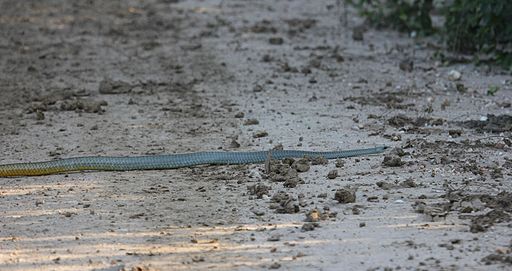Superregnum: Eukaryota
Regnum: Animalia
Subregnum: Eumetazoa
Cladus: Bilateria
Cladus: Nephrozoa
Superphylum: Deuterostomia
Phylum: Chordata
Cladus: Craniata
Subphylum: Vertebrata
Infraphylum: Gnathostomata
Superclassis: Tetrapoda
Cladus: Reptiliomorpha
Cladus: Amniota
Classis: Reptilia
Cladus: Eureptilia
Cladus: Romeriida
Subclassis: Diapsida
Cladus: Sauria
Infraclassis: Lepidosauromorpha
Superordo: Lepidosauria
Ordo: Squamata
Subordo: Serpentes
Infraordo: Caenophidia
Superfamilia: Colubroidea
Familia: Colubridae
Subfamilia: Colubrinae
Genus: Chironius
Species: Chironius laurenti
Name
Chironius laurenti Dixon, Wiest & Cei, 1993
Type locality: Bolivia, Department of Beni, Rio Mamore.
Holotype: AMNH 101815.
Synonyms
Chironius laurenti Dixon, Wiest & Cei, 1993
Chironius laurenti — Hollis, 2006
References
Dixon J. R.; Wiest J. A. Jr.; Cei J. M. 1993. Revision of the Neotropical snake genus Chironius Fitzinger (Serpentes, Colubridae). MUSEO REGIONALE DI SCIENZE NATURALI MONOGRAFIE (TURIN), 13 :1-280.
Hollis, J.L. 2006. Phylogenetics of the genus Chironius Fitzinger 1826 (Serpenes, Colubridae) based on morphology. Herpetologica, 62 (4): 435–452.
Chironius laurenti at the New Reptile Database. Accessed on 22 August 2008.
Vernacular names
English: Laurent's Sipo
Chironius laurenti is a species of nonvenomous snake in the family Colubridae. The species is endemic to Bolivia and Brazil. The species was named in honor of Raymond Laurent.[1]
Taxonomy
Chironius laurenti belongs to the genus Chironius (commonly known as sipos or savanes) in the subfamily Colubrinae of the family Colubridae. The species was first described in 1993 by the herpetologists James R. Dixon, John A. Wiest, Jr., and José M. Cei. The type specimens were recovered from the Mamoré River of Beni, Bolivia. The species is named after Belgian herpetologist Raymond Laurent.[1][2]
Description
C. laurenti is a large snake. The longest male and female found had a total length (including tail) of 2.15 and 1.78 m (7.1 and 5.8 ft) respectively. The head (top, sides, upper portion of the rostral scales and upper portions of the supralabial scales) of adults is olive, grayish or gray-brown in color. 32 to 36 maxillary teeth are present.[1][3]
The upper (dorsal) coloration varies between grayish, gray-olive, brown-olive, brown and olive. The anterior end of the dorsum is usually grayish, whereas the posterior two thirds of body and tail are brownish. The subcaudal scales (scales below the tail) are immaculate yellow in color. There are 2 to 10 scale rows in males and 2 to 6 in females which are keeled, with a maximum of 12 scale rows at midbody. The ventral (belly) scales number from 163 to 181. A longitudinal ridge (keel) is present along the backs of females.[1][3]
Subadults and some adults have faint whitish crossbands, which are remnants of the juvenile pattern, on the body and the tail.[1]
Geographic range
The known distribution of C. laurenti is restricted to Beni, Cochabamba and Santa Cruz in Bolivia and Mato Grosso in Brazil.[3]
References
Dixon, James R.; Wiest, John A. Jr.; Cei, José M. (1993). Revision of the Neotropical snake genus Chironius Fitzinger (Serpentes, Colubridae). Monografia 13. Turin: Museo Regionale di Scienze Naturali. 280 pp. ISBN 9788886041058. (Chironius laurenti, new species, p. 141).
Beolens, Bo; Watkins, Michael; Grayson, Michael (2011). The Eponym Dictionary of Reptiles. Baltimore: Johns Hopkins University Press. xiii + 296 pp. ISBN 978-1-4214-0135-5. (Chironius laurenti, p. 152).
Uetz, Peter; Hallermann, Jakob; Hosek, Jiri. "Chironius laurenti ". The Reptile Database. Retrieved August 24, 2012.
Retrieved from "http://en.wikipedia.org/"
All text is available under the terms of the GNU Free Documentation License


